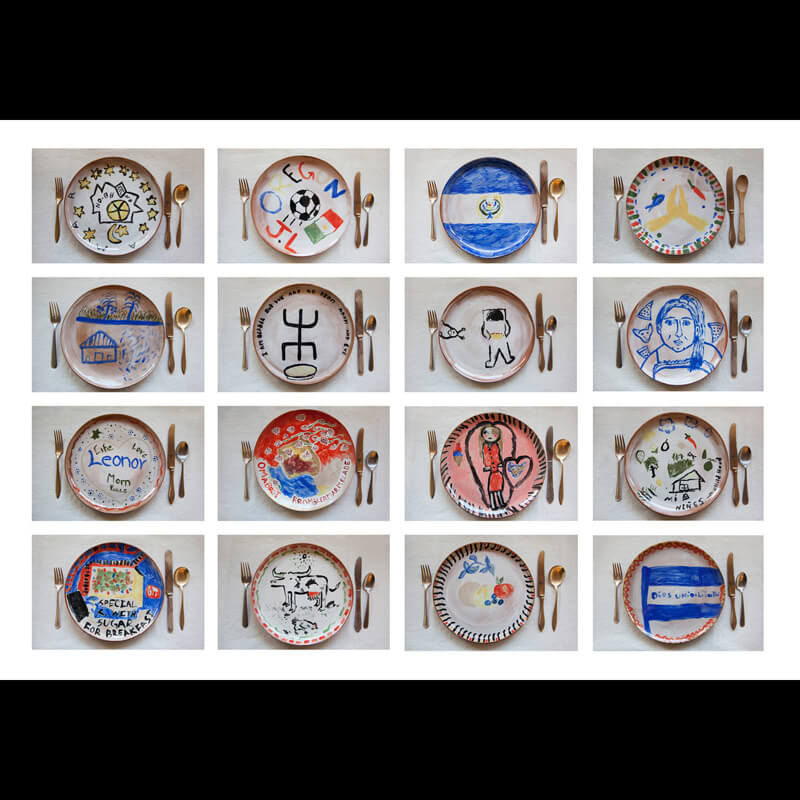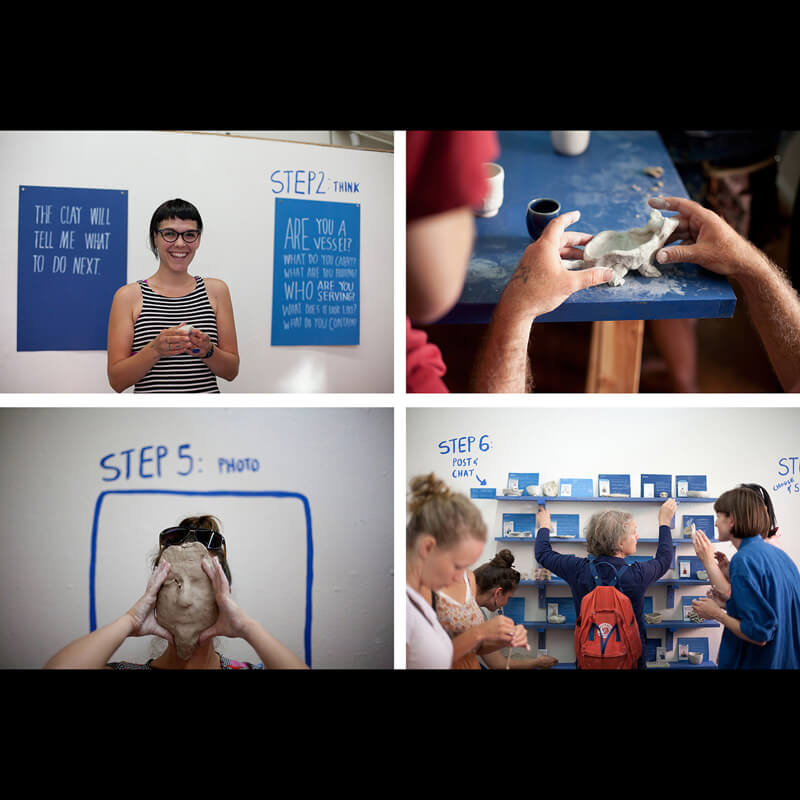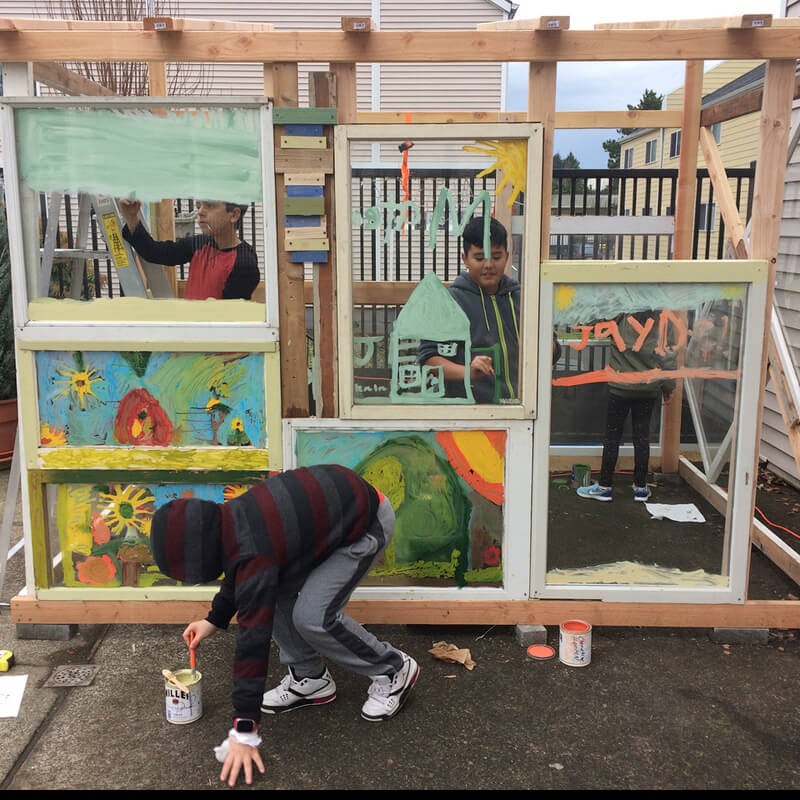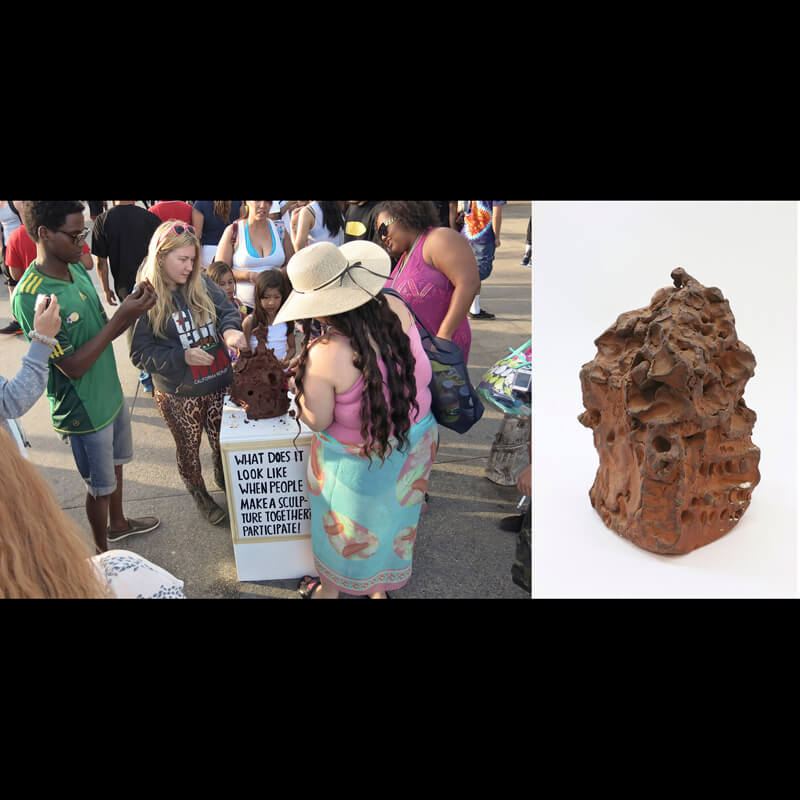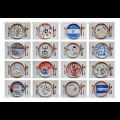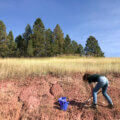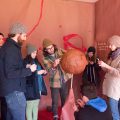
Red Lodge Clay Center – Short-Term Resident (MJ Do Good) 2018, (AIA) 2022
Amanda Leigh Evans is an artist, educator, and cultivator seeking a deeper understanding of our social and ecological interdependence. She makes clay objects, gardens, books, websites, videos and sculptures, and participates in collaborative systems. For five years, Evans lived and worked as an artist-in-residence in a 120-unit affordable housing apartment complex in East Portland, OR. There, in collaboration with her neighbors, she cultivated The Living School of Art, an intergenerational art collective and alternative art school that centered the many cultures and crafts-based creative practices held within the neighbor community. Since 2014, Evans has been a core collaborator at the King School Museum of Contemporary Art (KSMoCA), a contemporary art museum inside a public elementary school in NE Portland, OR.
Evans holds an MFA in Art and Social Practice from Portland State University and a Post Bac in Ceramics from Cal State Long Beach. She has presented work and publications at MOCA, the Portland Art Museum, the Museum of Contemporary Craft, and the Museum of Contemporary Art San Diego. She is the recipient of Artplace America, the Arlene Schnitzer Visual Art Prize at PSU, the Metro Creative Placemaking Grant, and the Precipice Fund. Currently, Evans is a Visiting Assistant Professor teaching ceramics and social practice at Whitman College in Walla Walla, WA. She lives and works in the Pacific Northwest.
My work engages and activates systems of social and ecological interdependence. I am interested in invisible, entangled relationships with the people, ecologies, and industries that surround me. My position as a participant in these systems is the site of my artistic research.
I work at the intersection of ceramics and social practice on site-responsive, experiential research artworks. Over the past decade, I have developed short-term and long-term collaborative work with geologists, apartment youth, immigrant chefs, wheat and onion farmers, elementary schools, local musicians, rare earth miners, public historians, and wildlife biologists on projects that challenge conventional definitions of artistic authorship, audience, and exhibition. Through my work, I hope to build greater awareness for the responsibility each person holds in contemporary neighbor communities, regional ecosystems, and global trade industries, whether we realize it or not.
Clay is a social medium. Ceramics is a historically social practice. Since time immemorial, ceramic artists have worked in shared spaces and collectivist practices, passing down unwritten, embodied knowledge of landscape and process from one generation to the next. Furthermore, the ceramic objects they left behind are conduits for social and ecological connection. Clay, glazes, and raw elements are materials from the landscape that connect us to deep time and space. The raw materials of the earth and the people who use them are part of an interdependent matrix from which all life emerges and on which life depends. My work engages the broad material and conceptual history of ceramics as a social-ecological medium.

